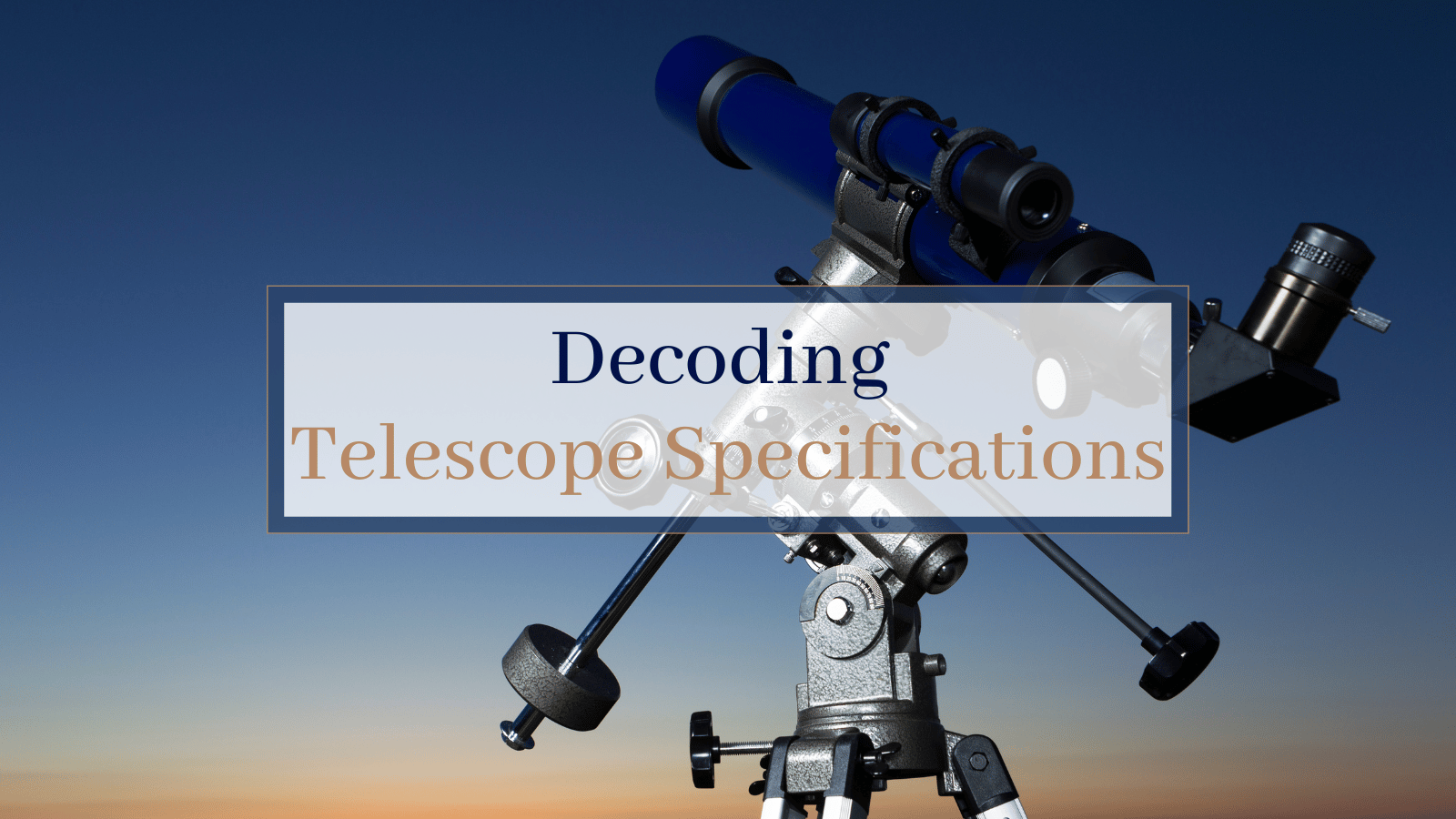So, you're on the hunt for a new telescope, but the journey seems filled with unfamiliar technical jargon. You might find yourself wondering, "Why does this have to be so complicated? Can't I just gaze through the eyepiece and enjoy the stars and planets?" Well, to some extent, yes. However, the specific features of the telescope you choose can significantly impact your ability to observe celestial wonders.
Understanding these telescope specs may not come naturally at first, but fear not! In this post, we're here to give you a straightforward rundown of the key technical terms. While there might be other model-specific details tucked away in the product description, we're honing in on the essential terms that you absolutely need to know.
Understanding Telescopes: top 5 specs you should be aware of
Aperture: how much light your telescope gathers
Think of the telescope's aperture as the size of its main lens or mirror – it's like the eye of the telescope. This eye determines how much light the telescope can capture from faraway objects. The rule is simple: the bigger the aperture, the more light it grabs.
And why does that matter? Well, it's all about getting a clearer, sharper, and more detailed view of those distant objects. Aperture is usually measured in millimeters, but you might spot it in inches sometimes. To put it in perspective, our eyes have an aperture of around 7mm. Now, when you're looking at entry-level telescopes, a good one typically has an aperture ranging from 70mm to 100mm.
Focal Length: unlocking a broader perspective with your telescope
Consider focal length as the distance light travels inside a telescope tube – from where it first enters at the aperture to where it exits at the focuser. Usually, a longer telescope tube means a longer focal length, but not always. Some telescopes play tricks with extra mirrors, bouncing light around to boost the focal length without bulking up the tube.
Entry-level telescopes usually hang around the 600mm focal length mark, while fancier ones can stretch up to a whopping 2,000mm. Why does it matter? Well, a longer focal length gives you a narrower view, perfect for checking out planets and the moon. Meanwhile, a shorter focal length widens the scope, making it awesome for exploring galaxies and the Milky Way.
Focal Ratio: unraveling the speed and brightness of your telescope
Let's delve into the focal ratio, often called the f-number – a key factor found by dividing the telescope's focal length by its aperture. This nifty metric tells us how much light each pixel captures, essentially dictating the brightness of our images. In simpler terms, when we talk about faster or slower focal ratios, we're comparing exposure times in photography. A faster focal ratio, like f/3, means quicker exposures, soaking up more light per pixel. Conversely, a slower one, like f/9, needs a bit more time for exposure, collecting less light per pixel.
Here's a handy comparison: our eyes have an f-number ranging from f/8 to f/2.1. Picture this – a bigger focal ratio brings higher magnification and a narrower view, while a smaller one gives lower magnification and a broader view. So, when you're observing the moon and planets, aim for a focal ratio of f/10 or more. But if you're stargazing at galaxies and the Milky Way, a focal ratio of f/7 or less is the way to go.
Magnification: bringing objects closer for a detailed view
Next, let's discuss magnification, which is basically like the telescope's zoom or power. It's all about making things bigger while narrowing down what you can see. To figure out how much you're zooming in, you do some math - you take the telescope's focal length and divide it by the eyepiece's focal length. For example, if your telescope has a focal length of 1200mm and the eyepiece is 30mm, you do 1200 / 30, which gives you 40. So, your image is magnified 40 times.
Now, if you want to change how much you're zooming in, you switch out the eyepiece for a different one. Usually, the maximum useful magnification is around 50 times the telescope's aperture in inches or 2 times the aperture in millimeters. But here's the catch - as you crank up the magnification, the image might get a bit fuzzy. If the telescope isn't grabbing enough light, the enlarged image could end up too faint. And at really high magnification levels, the image might blur more easily due to atmospheric conditions.
Outlined below are the frequently cited specifications concerning the maximum practical magnification and the size of the telescope's aperture, at least in theory:
| Aperture (inches) |
Aperture (mm) |
Maximum Usable Power |
| 2.4 | 60 | 120x |
| 3.1 | 80 | 160x |
| 4 | 100 | 200x |
| 5 | 125 | 250x |
| 6 | 150 | 300x |
| 8 | 200 | 400x |
| 10 | 250 | 500x |
| 12.5 | 320 | 600x |
| 14 | 355 | 600x |
| 16 | 400 | 600x |
| 17.5 | 445 | 600x |
| 20 | 500 | 600x |
Resolution: bringing clarity to the finer details
When we talk about telescope resolution, we're getting into the nitty-gritty of how much detail you can spot in an image. This comes in handy when you're trying to tell apart two stars that are super close or when you want a closer look at the moon's surface.
We measure resolution in arcseconds, which is just a tiny fraction of a degree (1/3600 to be exact). Now, there are a couple of ways to figure out resolution - one is using the Rayleigh criterion, and the other is the Dawes limit.
For Rayleigh, you can calculate it by taking 5.45 and dividing it by the aperture (in inches), or 138 divided by the aperture (in millimeters). Dawes resolution is a bit different, calculated as 4.56 divided by the aperture (in inches), or 116 divided by the aperture (in millimeters). The rule of thumb here is pretty straightforward – the bigger the aperture, the sharper your view is going to be.
Next steps
Armed with your newfound knowledge of telescope specifications, you're well-equipped to navigate the diverse offerings in the telescope market. At AstroTelescopium, we pride ourselves on offering a thoughtfully curated range of telescopes from top-notch brands, all at excellent value prices. Explore our telescope collection at your leisure.
For additional insights, consider delving into our guide on choosing the right telescope, or feel free to connect directly with a member of our team for personalized assistance. Happy stargazing!
Copyright © 2024 AstroTelescopium

